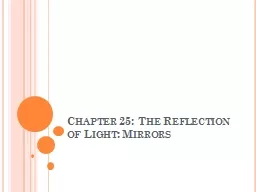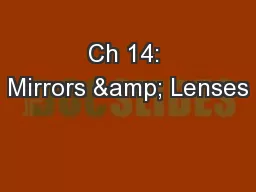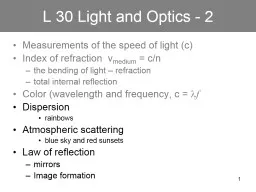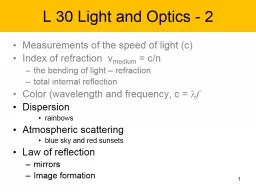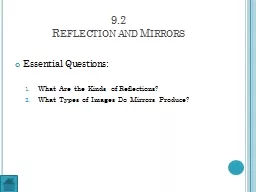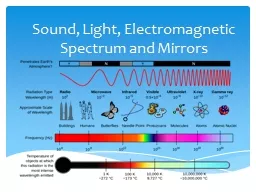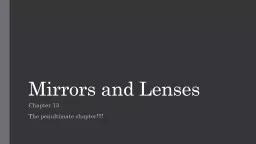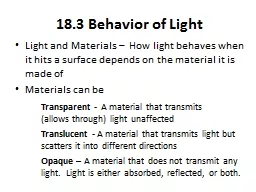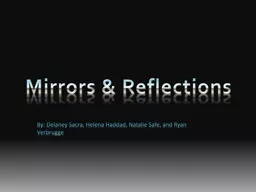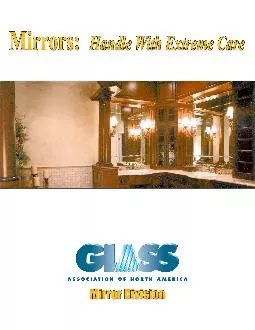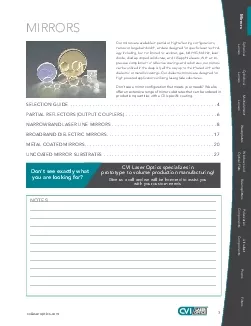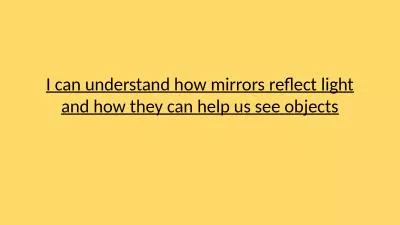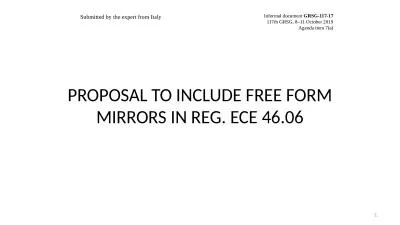PPT-Chapter 25: The Reflection of Light: Mirrors
Author : tawny-fly | Published Date : 2018-09-22
Wavefronts and Rays In describing the propagation of light as a wave we need to understand wavefronts a surface passing through points of a wave that have
Presentation Embed Code
Download Presentation
Download Presentation The PPT/PDF document "Chapter 25: The Reflection of Light: Mir..." is the property of its rightful owner. Permission is granted to download and print the materials on this website for personal, non-commercial use only, and to display it on your personal computer provided you do not modify the materials and that you retain all copyright notices contained in the materials. By downloading content from our website, you accept the terms of this agreement.
Chapter 25: The Reflection of Light: Mirrors: Transcript
Download Rules Of Document
"Chapter 25: The Reflection of Light: Mirrors"The content belongs to its owner. You may download and print it for personal use, without modification, and keep all copyright notices. By downloading, you agree to these terms.
Related Documents

